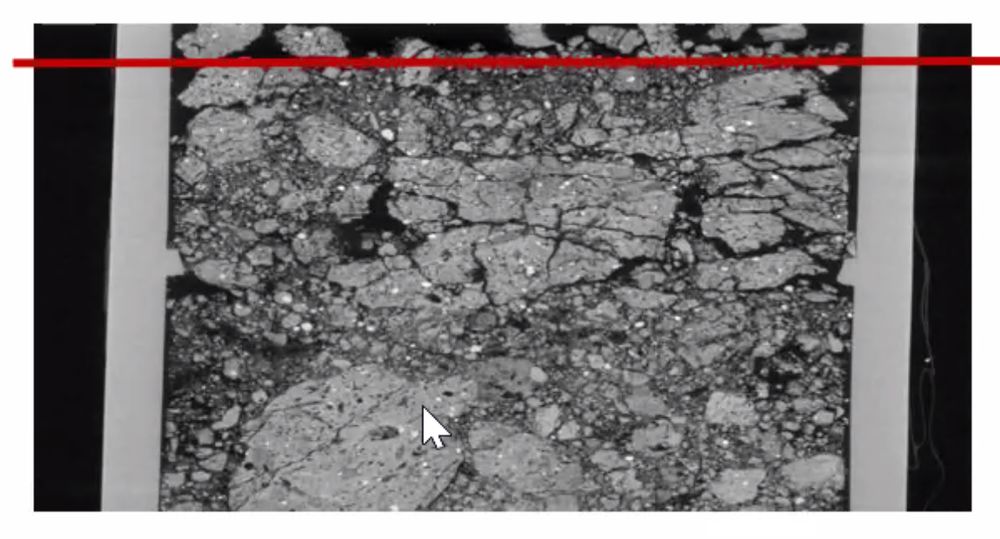
Maggie R Wagner
@maggie-r-wagner.bsky.social
Integrative plant biology 🌾 🧪 at the University of Kansas!
Interestingly, root microbiomes were more stable (less responsive to drought, less variable among inocula) in gamagrass than maize. The opposite of what we saw for plant phenotype and gene transcription! It's unclear if/how this is related to the difference in community function.

November 10, 2025 at 4:45 PM
Interestingly, root microbiomes were more stable (less responsive to drought, less variable among inocula) in gamagrass than maize. The opposite of what we saw for plant phenotype and gene transcription! It's unclear if/how this is related to the difference in community function.
Compared to gamagrass, the phenotypic and transcriptional responses of maize to soil microbial legacy were weaker across the board. Unlike in gamagrass, we didn't see improved drought tolerance in the maize grown with dry-legacy microbiota.
(photos: N. Ginnan)
(photos: N. Ginnan)


November 10, 2025 at 4:45 PM
Compared to gamagrass, the phenotypic and transcriptional responses of maize to soil microbial legacy were weaker across the board. Unlike in gamagrass, we didn't see improved drought tolerance in the maize grown with dry-legacy microbiota.
(photos: N. Ginnan)
(photos: N. Ginnan)
We showed that the genes that were differentially expressed due to microbiota legacy mediated the gamagrass drought response. Orthologues of nicotianamine synthase, known to contribute to drought resistance in other grasses, were among the strongest mediators.

November 10, 2025 at 4:45 PM
We showed that the genes that were differentially expressed due to microbiota legacy mediated the gamagrass drought response. Orthologues of nicotianamine synthase, known to contribute to drought resistance in other grasses, were among the strongest mediators.
In gamagrass, microbiota with a low-precipitation legacy mitigated the negative effects of drought on water use efficiency, transpiration, & other traits, relative to microbiota from wetter climates. Microbial legacy also affected transcription of ~200 host genes in crown roots.


November 10, 2025 at 4:45 PM
In gamagrass, microbiota with a low-precipitation legacy mitigated the negative effects of drought on water use efficiency, transpiration, & other traits, relative to microbiota from wetter climates. Microbial legacy also affected transcription of ~200 host genes in crown roots.
Then @botanichole.bsky.social inoculated reps of each soil community onto seedlings of 2 species (maize and its wild relative Eastern gamagrass). Their effects on plant phenotype reveal the functional consequences of soil precipitation legacy for plants challenged by a subsequent acute drought.

November 10, 2025 at 4:45 PM
Then @botanichole.bsky.social inoculated reps of each soil community onto seedlings of 2 species (maize and its wild relative Eastern gamagrass). Their effects on plant phenotype reveal the functional consequences of soil precipitation legacy for plants challenged by a subsequent acute drought.
Next we tried to break the legacy effect by exposing all the soils to a 5-month-long drought (or well-watered control conditions) in the lab. But precipitation legacy remained the strongest predictor of metagenome, metatranscriptome, & SNP variation! Legacy effects were robust.

November 10, 2025 at 4:45 PM
Next we tried to break the legacy effect by exposing all the soils to a 5-month-long drought (or well-watered control conditions) in the lab. But precipitation legacy remained the strongest predictor of metagenome, metatranscriptome, & SNP variation! Legacy effects were robust.
Then, Dr Gopaulchan used the metagenome data to identify SNPs *within bacterial lineages* that were associated with precipitation -- evidence that evolutionary processes shaping strain-level variation also contribute to the formation of precipitation legacy in soil microbiota.

November 10, 2025 at 4:45 PM
Then, Dr Gopaulchan used the metagenome data to identify SNPs *within bacterial lineages* that were associated with precipitation -- evidence that evolutionary processes shaping strain-level variation also contribute to the formation of precipitation legacy in soil microbiota.
In these soils, Dr Custódio identified several bacterial taxa and metagenome features that were reliable "biomarkers" of precipitation legacy even after controlling for other soil variables like porosity and nutrient content, evidence of ecological filtering for dry-adapted taxa.


November 10, 2025 at 4:45 PM
In these soils, Dr Custódio identified several bacterial taxa and metagenome features that were reliable "biomarkers" of precipitation legacy even after controlling for other soil variables like porosity and nutrient content, evidence of ecological filtering for dry-adapted taxa.
(Here's a photo of one of our most western/driest collection sites, Smoky Valley Ranch, in gorgeous autumn foliage. Photo credit @erinrsocha, thanks to @nature_kansas for letting us grab some soil!)

November 10, 2025 at 4:45 PM
(Here's a photo of one of our most western/driest collection sites, Smoky Valley Ranch, in gorgeous autumn foliage. Photo credit @erinrsocha, thanks to @nature_kansas for letting us grab some soil!)
We studied soils from remnant prairies across Kansas, which spans a steep precipitation gradient. The prairie detail is important because we wanted to make sure the long-term effects of mean annual precipitation hadn't been disrupted by irrigation at any point.

November 10, 2025 at 4:45 PM
We studied soils from remnant prairies across Kansas, which spans a steep precipitation gradient. The prairie detail is important because we wanted to make sure the long-term effects of mean annual precipitation hadn't been disrupted by irrigation at any point.

